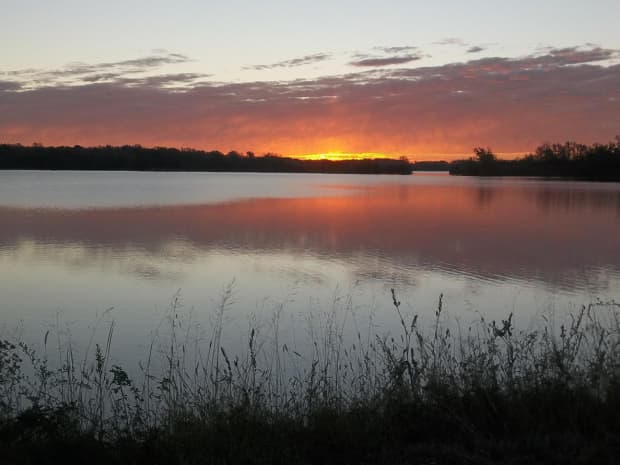This post was originally published on this site
Dear MarketWatch,
I’m looking for advice on where to live in retirement.
I’m a disabled veteran, my spouse is retired/disability military, and we have a combined monthly income of $4,200 a month. It may eventually rise to $5,400. We have no debt and about $75,000 in savings.
We’re in our 40s and looking to live in a state that does not tax military retirement and offers a lot of veteran benefits. We want to buy a house with at least 10 acres in a rural location no more than one hour from a large town/small city that has great health care, shopping, restaurants, and a college/university. We don’t own a house now that we could sell. We also love to travel, so a major airport within a three-hour drive would be a bonus. We’d also love to be near some kind of water, a large lake or river.
The climate is the issue. We lived in Texas and hated the extreme heat, but we also despised the freezing Wisconsin winters. We love the feel of drier areas, but the look of places that get more rain. Finally, as odd as this last request is, it is extremely important: somewhere with open spaces with a view of the horizon. Enclosed spaces — deep valleys, too many trees, etc. — make me claustrophobic.
West of the Mississippi River would be ideal, but not required.
Any suggestions would be welcome!
Thank you,
Megan
Dear Megan,
You’ve got an interesting climate and geographical conundrum.
But the bigger issue is budget. Congratulations on being debt-free — that’s huge. Beyond that, though, it’s going to be hard to afford those 10 acres and a house on an income of $50,000 and savings of $75,000. (Let’s not count on the extra money until it happens.) That, more than anything else, will decide where you live. I cast a wide net in several states, searching what’s listed for sale on Realtor.com (which, like MarketWatch, is owned by News Corp.) by state — not county — and there isn’t much in the way of single-family homes, a minimum of 10 acres and a price limit of $180,000. And that’s before we think about proximity to the right kind of town or city or where the water is.
I know you didn’t give me a price tag, but that seems like a generous amount given your finances. Please don’t stretch your budget for a house and land only to wind up cash-poor.
You say you like the feel of dry areas but the look of green areas. I initially thought of the Pacific Northwest given the low humidity there. Unfortunately, it’s essentially unaffordable for you. My search turned up 15 options in Washington state, almost all in forest areas (that sounds like a no for you), and just four in Oregon. It doesn’t get much better if mobile homes are added.
Of course, housing markets may change. But based on today’s realities, you may need to choose between more humidity or the brown of the desert. Or you may need to reconsider how much land you want.
If this is the dream and you want it now, I suggest you start with the states that appeal and do the same search. I found more properties that met the price and acreage criteria in eastern and southeastern Ohio, for example; would that be wide open enough for you? Even if it’s not west of the Mississippi? And regardless of whether it’s Ohio or another state, you may have to compromise on the town and its amenities.
Or you may decide to stay put for a while, look for ways to earn more money, save the additional income so that you have more options, and then revisit. If you’re thinking a decade out, getting a better sense now of what your dream will cost can clarify how much extra you need to save each year. You can spend some of your travels exploring your shortlist. The MarketWatch retirement tool may help you refine your options.
You also mentioned state income taxes, especially tax breaks for retired military. Not only do tax rates change, but they are only part of the picture. Don’t overlook property taxes as well as the cost of any services not covered by your taxes. All those repairs you never have to deal with as a tenant don’t come cheap either, let alone any upgrades.
Still, you want to know. This SmartAsset retirement tax calculator will give you a sense of what you’ll pay in state taxes. Here’s a separate state-by-state look at military retirement pay and taxes.
If you are planning to work remotely, ask about the quality (and price) of internet access. Unfortunately, high-speed internet isn’t a given in rural America.
With all that said, I’ve got some cities that could be the starting point for your search for a more rural spot. I sought out those that have or are close to Veterans Administration medical centers, not just outpatient centers or clinics. And thank you for your service; I’m sorry it led to disabilities for both of you. I wish you the best.

This is the pick for college sports and tailgating.
Getty Images
Columbia, Missouri
This city of 125,000 halfway between St. Louis and Kansas City is home to the state’s flagship public university, the University of Missouri, and 30,000 students. If big-time college sports are important to you, this is the one to pick among my three suggestions.
As for Columbia itself, the city ranked sixth on Livability’s list of best places to live in 2019 and 30th (with different criteria) in 2020. The Milken Institute puts it fourth among small metros for successful aging. Cyclists will like it because it’s a silver-level bicycle-friendly community, as judged by the League of American Bicyclists, and the MTK Trail will lead you to the Katy Trail, a 240-mile trail that runs across much of the state, often by the Missouri River.
Columbia also has a VA medical center, and the state offers some tax breaks for disabled veterans. You’ll find plenty of rural, wide-open areas within an hour’s radius. Again, supply and price may be an issue.
Columbia Regional Airport is 12 miles away, but you’d have more flight options at the Kansas City and St. Louis airports, each about two hours away.
This is not Wisconsin weather; average highs in January get to around 40. July highs average 89 degrees.
Here’s what Realtor.com shows is on the market now across Missouri using the criteria I selected. Of course you can change the criteria to see how that affects your options.

The Keeper of the Plains steel sculpture on the Arkansas River in Wichita.
iStockphoto
Wichita, Kansas
Kansas is one of those states that doesn’t tax military pensions, and you’ve got wide-open views. But Wichita has nearly 400,000 people — is that too large, even if you’re an hour away?
Here’s why it may appeal: A VA medical center in the city, Wichita State University (15,000 students), and the local airport, which is the busiest in the state; the Kansas City airport, on the Missouri side of the state line, is three hours away.
Livability flags Wichita’s “trendy downtown district.” There’s also a thriving arts scene and, given its size, plenty of shopping. Your water options could include Lake Afton and Cheney Reservoir, both to the west.
Winters are warmer than in Columbia — January highs are 45 degrees. But average July temperatures hit 95 and it does get humid; is that too close to the Texas weather you didn’t like? And I can’t ignore the fact that Kansas is part of the U.S. “tornado alley”.
Here are Realtor’s live listings for all of Kansas, again using the parameters I discussed.

Crab Orchard National Wildlife Refuge, near Carbondale, Ill.
Courtesy Crab Orchard National Wildlife Refuge
Carbondale, Illinois
I took a look at options east of the Mississippi and landed here. The southern part of Illinois is more affordable though not as flat as the farmland to the north. You should still get some open spaces, though. It also will feel more southern.
Let’s get taxes out of the way: Illinois also doesn’t tax military retirement pay.
Carbondale is home to 25,000 people and Southern Illinois University, which has just over 11,000 students. Just under 60,000 people live in all of Jackson County. While there’s a hospital in town, you can also drive 25 minutes due east to Marion, which has the region’s VA medical center. Marion is smaller than Carbondale, with 17,500 residents, but Williamson County has more than 66,000 inhabitants.
Shawnee National Forest — and especially the vista from the Garden of the Gods — is a draw for many, although it admittedly may make you feel claustrophobic. You might prefer Crab Orchard National Wildlife Refuge, between Carbondale and Marion.
Your best airport is likely in St. Louis, two hours away.
Temperatures will be similar to those in Columbia, but you’ll likely get a little less snow.
Of my three suggestions, this has the cheapest housing, according to Census Bureau data. Here’s what Realtor shows is on the market in Illinois, always within those price and acreage constraints.
Readers, where should Megan and her husband go? Leave your suggestions in the comments section.
Finally: We want clean air and a pastoral life — where should we retire on a budget of $40,000 a year?

